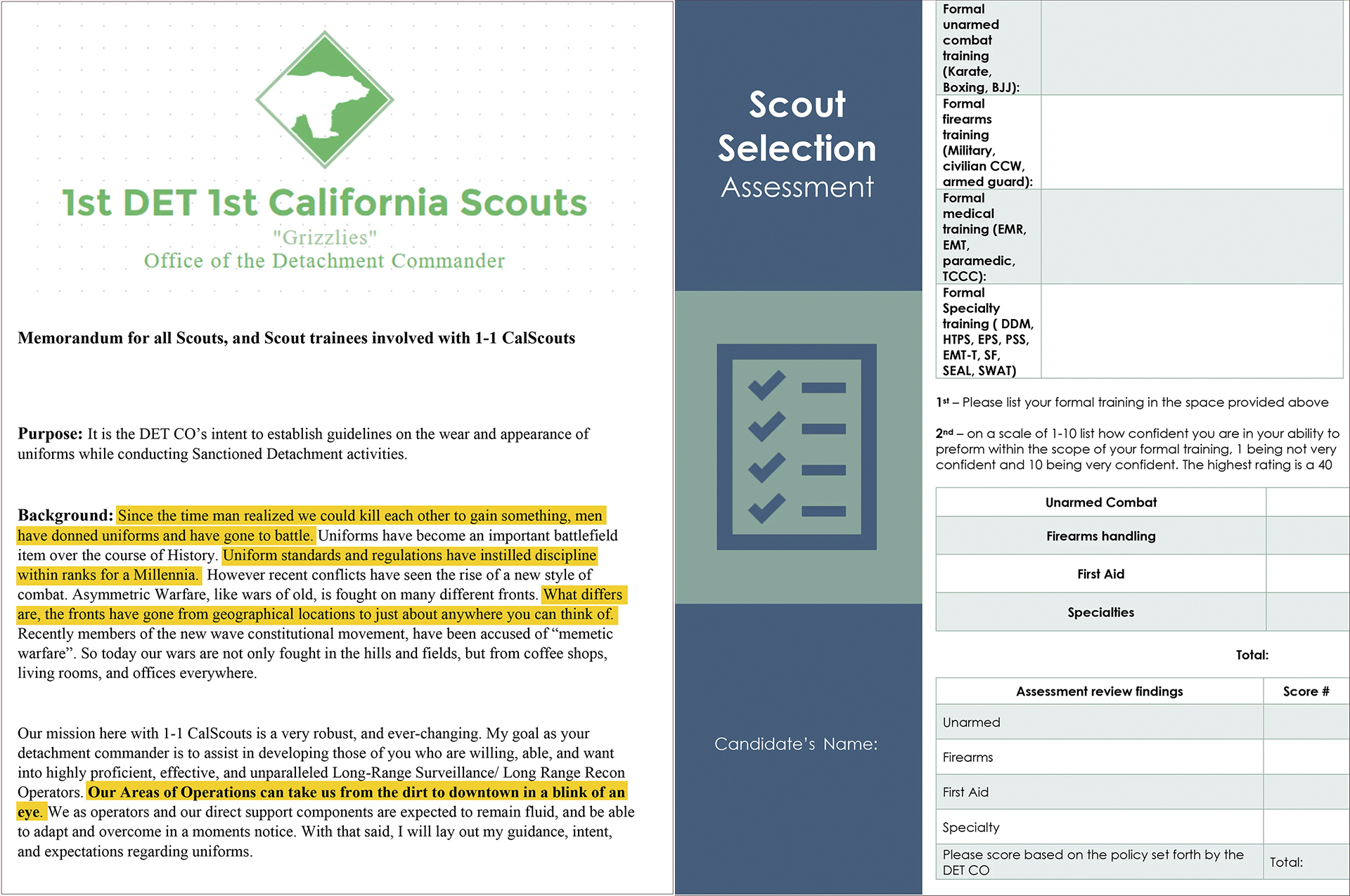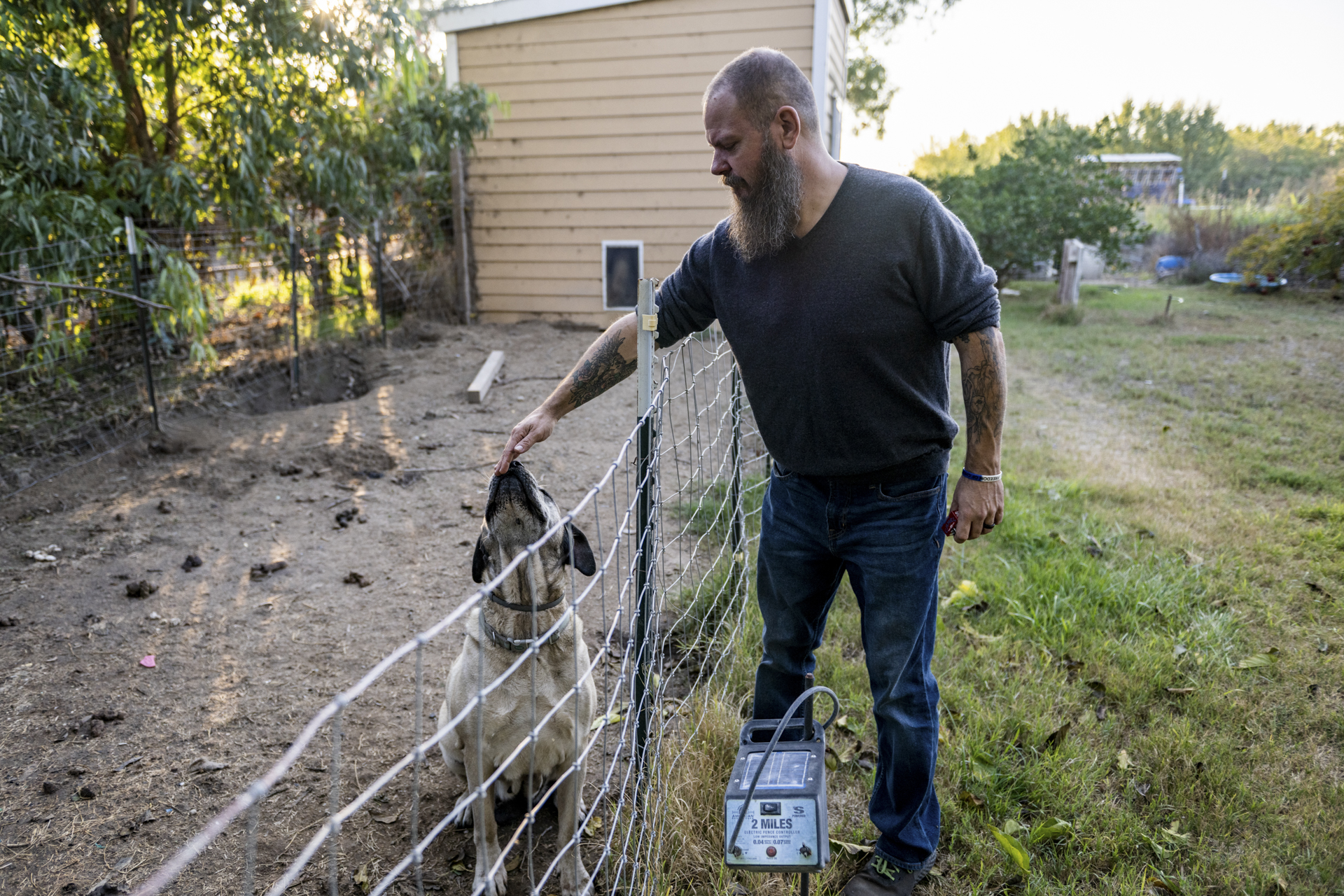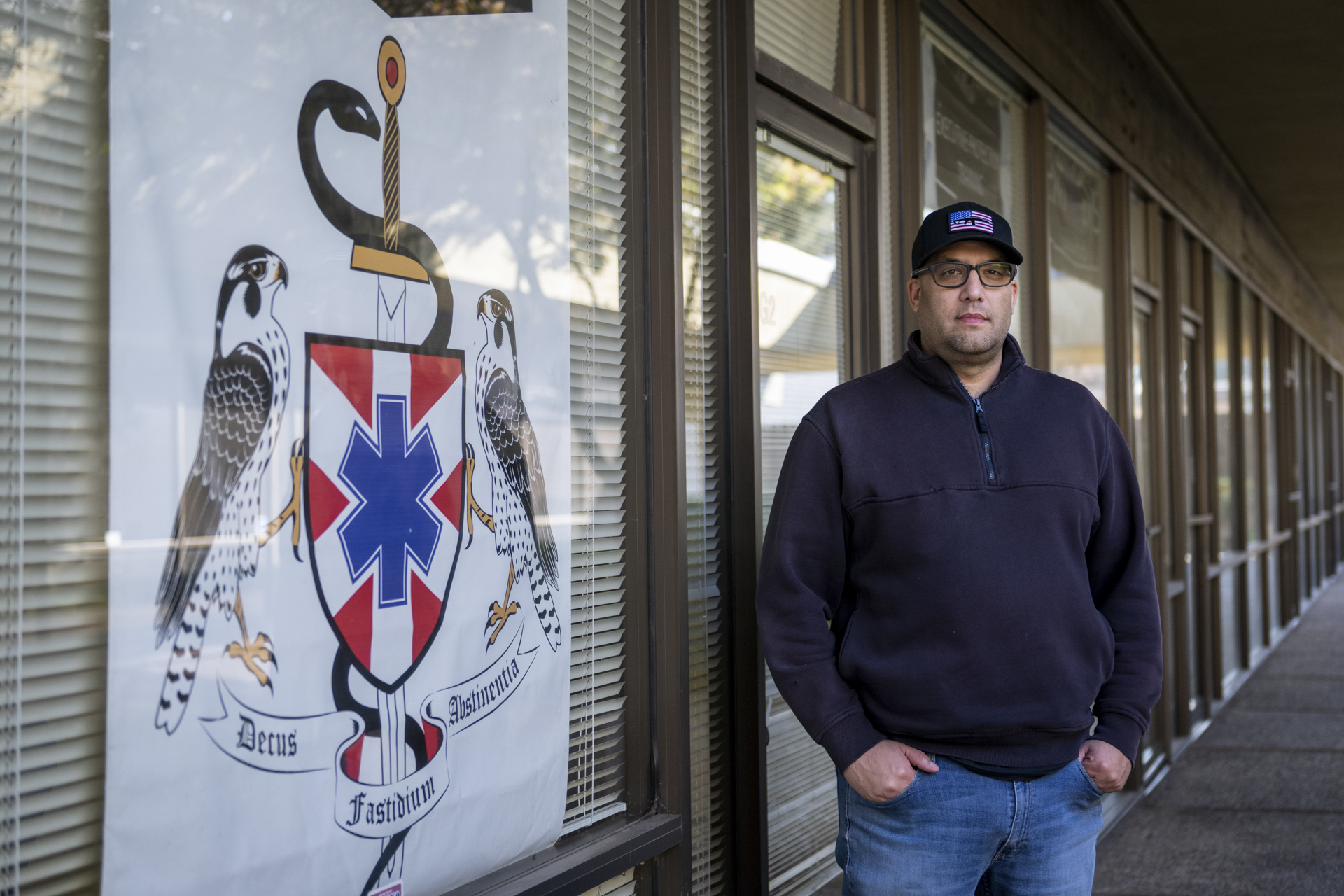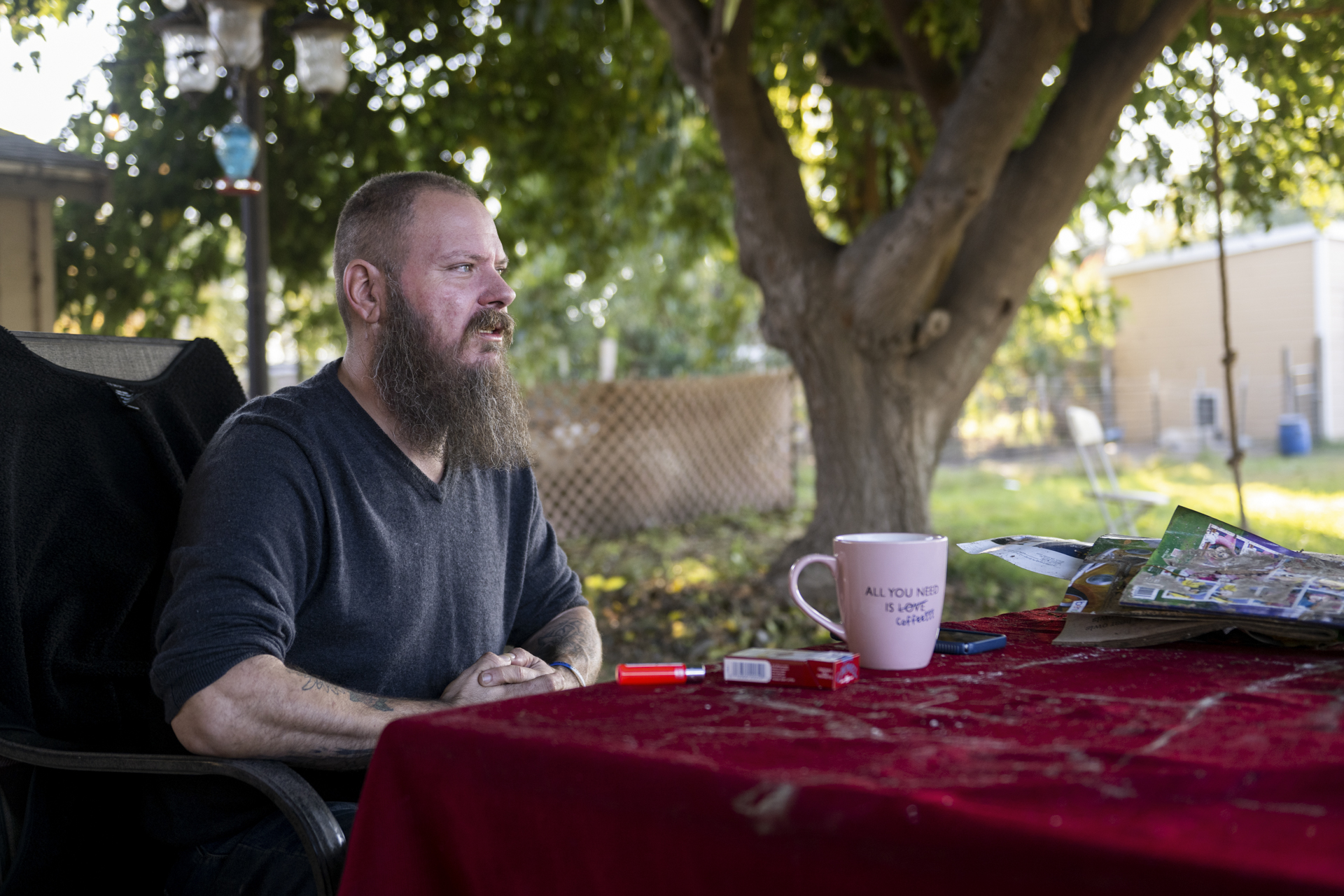According to a June 2022 report filed in state court on Carrillo’s “social history and mental decline,” Carrillo found Rush and the Grizzly Scouts in April 2020. After Carrillo joined Facebook groups in support of Second Amendment protections and libertarian ideals, the platform’s algorithm suggested other groups he might be interested in.
One of them was /K/alifornia Kommando, the Facebook group run by Rush, where prosecutors say he recruited for the Grizzly Scouts. Rush invited Carrillo to the Grizzly Scouts’ group chats and asked Carrillo to sign a liability release, a nondisclosure agreement and an employment application that requested information about Carrillo’s military experience. Rush also sent Carrillo a packing list for an in-person meeting.
Carrillo later described the Grizzly Scouts as a “paramilitary organization that viewed police as the enemy.” The group was mostly made up of veterans upset with the government for various reasons, including the state of the veteran health care system, according to the report.

Court records show members of the group were given ranks. As commanding officer, Rush held the rank of major. Robert Jesus Blancas, a transient Castro Valley resident, was responsible for security and intelligence, while Kenny Miksch of San Lorenzo was in charge of training and firearms instruction. They were named first lieutenants. Simon Sage Ybarra of Los Gatos held the rank of corporal and was responsible for recruitment. Carrillo was made staff sergeant.
Members discussed tactics for killing police in a WhatsApp group chat labeled “209 Goon HQ” (PDF), a reference to the Central Valley area code, according to a March 2021 indictment. At one point, Rush messaged another member: “The gov spent 100s of thousands of dollars on training me, im gonna use that shit,” court records show.
In May 2020, Rush invited Carrillo to a secluded ranch east of Turlock and told him to bring guns, ammunition, a burner phone and other supplies. Carrillo met with the Grizzly Scouts twice — around May 9 and May 16. He returned home “energized and ecstatic, keenly focused on the mission of the group, and agitated about police misconduct,” Carrillo’s then-girlfriend said, according to the report.
Griffith and Ayers said Rush invited them to hang out with the Grizzly Scouts, but they declined. Neither thought the group was anything unusual. When Griffith asked Rush who would be there, he said Rush responded, “Like-minded people.”

Data show 84% of people with military backgrounds who committed extremist crimes from 1990 to 2021 did so after leaving the military. On average, crimes were committed 15 years after discharge, according to START.
One of the most infamous examples of violent extremism in U.S. history is the April 19, 1995, bombing of the Alfred P. Murrah Federal Building in Oklahoma City. Hundreds of people were injured by the blast that killed 168, 19 of whom were children. The perpetrator, Timothy McVeigh, was an Army veteran, private security guard and white supremacist assisted by a man he met in basic training.
“This is not illogical if you think about the cyclical pattern in the United States of wars and wars ending, and then a small number of disgruntled, or perhaps traumatized, or otherwise disenfranchised veterans coming home from that war and engaging in domestic violent extremism,” said William Braniff, director of START. “This is the story of the KKK, both after the Civil War, but then after World War I and II, in Korea and Vietnam. There’s a pattern here.”
Chris Buckley, an Army veteran who was a member of the Ku Klux Klan from 2013 to 2016 and now helps young people deradicalize as an intervention specialist with the nonprofit Parents for Peace, said there’s no shortage of reasons why veterans get involved in extremism. Buckley told KQED his own radicalization began inside the military. Learning to dehumanize his enemy was a tool that served him well emotionally in combat, but was never deactivated, he said.
“I come home with this hatred towards Muslims that was left completely unchecked,” said Buckley. “Then about six months after I got home, I started to have my experiences with PTSD. And I started to really break down mentally. Couple that with substance abuse.”
When he needed help, the KKK was there.
“They didn’t come at me with pitchforks, burning crosses and robes,” said Buckley, who testified in front of the House Committee on Veterans’ Affairs in March 2022. “They were like, ‘Hey, man, what’s going on, bro? Like, you need help with Christmas? Here’s some food, bro. Let’s take care of your family before we talk about what we do.’
“That was the first time anybody had reached out to help me. The VA wasn’t,” Buckley said.
In response to an email asking what the VA is doing to support veterans vulnerable to recruitment by extremist groups, Press Secretary Terrence Hayes said the agency is committed to educating veterans on how to identify disinformation and predatory practices.
“Like any group of Americans, the Veteran community is not a monolith. The overwhelming majority of Veterans neither commit nor condone extremism-related violence,” he wrote. “VA will take action where necessary to abide by laws that protect our country against a tiny minority committed to domestic violent extremism.”
Nicholas Sanders, who served as a medic in Afghanistan alongside Rush and is now a nurse in Texas, said groups like the Proud Boys and “other wannabe militias” prey on veterans searching for belonging.
“When I got out of the military, I worked at a military surplus store, and it was weekly,” he said. “People are handing me their cards like, ‘Hey, you know, we’ve got this club,’ or ‘We’ve got this group. We meet up on the weekends, bring your family and do all this.’”
Sanders was initially attracted to the displays of camaraderie.
“And then you start reading into it. You’re looking at their pictures and it’s like, ‘Oh, there’s only white people in here,’” he said. “It’s the equivalent of a gang to me. Gangs don’t prey on well-established people. Gangs prey on people that are looking for that acceptance and approval.”
‘I offed a fed’
In May 2020, the Grizzly Scouts prepared for an operation at a protest in Sacramento, according to prosecutors. Members distributed an “Operations Order” that identified law enforcement as “enemy forces.”
On May 27, 2020, Carrillo and Ybarra met behind a gas station in Los Gatos to assemble an assault rifle in the back of Carrillo’s van. The next day, Carrillo contacted Ybarra about attending a protest in Oakland, to “snipe some you know what’s.”
Ybarra didn’t respond. Instead he reached out to Rush, saying, “just wanted to make sure we are on the same page, and that targeting innocents doesn’t fly with me even if they are wearing a badge.”
Rush agreed, but said, “yea we need to actually develop targets and cases, be smart. They want war, then we bring em war.”
He went on: “We can start developing case files, gathering intel, and doing it just like big bro does.”
“im not about the fireworks,” he continued. “im more like a surgeon.”
On May 29, 2020, Carrillo rode to Oakland in a white van, allegedly driven by Robert Alvin Justus Jr., another man he met online. As they drove past the Federal Building, Carrillo flung open the sliding door and unloaded a fusillade of bullets toward two Federal Protective Service officers, killing David Patrick Underwood, 53, and wounding Sombat Mifkovic.
About a week later, Santa Cruz County Sheriff’s deputies were in Ben Lomond responding to a call about a white van with weapons inside. Carrillo ambushed the officers, killing Sgt. Damon Gutzwiller, 38, and wounding Deputy Alex Spencer, 32 at the time.
Later that day, Ybarra drove to Turlock to meet with Rush, prosecutors said, and group members conspired to erase conversations from their phones in which they discussed attacking police. Blancas destroyed Dropbox files related to the group’s structure, onboarding and operations, telling Ybarra a month later, “All physical files I had were literally burned.”
“He removed our platform and robbed our message,” Rush wrote to the Grizzly Scouts, referring to Carrillo. “Unfortunately we would almost have to wait for the next one. Which is disgusting.”
The Grizzly Scouts switched to a new messaging platform they thought would be more secure, according to prosecutors. A couple of weeks later, Rush began contacting members.
“Jump on [another communication’s platform] if you miss us were [sic] reinventing and if you wanna be apart [sic] of it we’d love to have you back,” Rush said to one member, according to court documents.
Enough
On an overcast afternoon last September, firearm enthusiasts inside a gun show at the Stanislaus County Fairgrounds perused tables stacked with Army fatigues, old tactical manuals, knives and bulletproof vests. Every so often, a loud jolt came from a corner where a stun gun was being demoed.
At one booth, a man and a woman wearing “California State Militia, 2nd Regiment” T-shirts answered a young man’s questions. Across the aisle, a group of men browsed ammunition magazines modified to hold no more than 10 rounds, per California law.
As he browsed the exhibits, stopping occasionally to talk with vendors, Ayers said he believed Rush may have talked about violence that he didn’t actually plan to carry out.
“Vets, we all get together and hang out,” Ayers said. “I think he got in over his head.”
In 2020, when coverage of Carrillo’s violence was on the news, Rush stopped by Ayers’ school and told him: “I know the two guys that are involved in that.”

“I was like, ‘How’d that all go down?’ He’s like, ‘No, we all hung out. And those two individuals were at the place that we hung out,’” Ayers said. “I’m like, ‘I hope you’re not connected to them.’ He says, ‘I mean, other than meeting up with them, but I would never think they’d go do this.’”
In August that year, the FBI executed search warrants for Rush’s apartment and the homes of other Grizzly Scout members. When he found out about the raid, Ayers said he asked Rush if there was something he wasn’t telling him. “He’s like, ‘No,’” Ayers said.
Griffith, too, remembered the raid.
“And that was kind of where I was like, ‘This is federal territory, buddy,’” Griffith said. “We don’t touch this. This isn’t about PTSD and TBI. If the FBI is knocking [on] your door or kicking or whatever, that’s more serious than what we can handle.”
In April 2021, Ayers said, he received a text from Rush saying FBI agents wanted to meet with him.
“And I said, ‘They didn’t arrest you then, and now they want to talk to you?’ I go, ‘If they are going to talk to you, go there, do what you’re supposed to do,” Ayers said. “You participate, you do what you’re told.’”
When Griffith found out Rush was being summoned by federal agents, he drove to the meeting at a Turlock Police Department precinct to offer support. Rush was already handcuffed in the back of a black SUV when he arrived.
Rush and other Grizzly Scout members were indicted on charges including conspiracy to destroy records in official proceedings, destruction of records in official proceedings and obstruction of official proceedings. At sentencing, Rush told the court he was “fearful and paranoid” at the time he created the Grizzly Scouts.
“I was exposed to so much rhetoric that seemed contradictory,” he said. “Things that were being said by the government on social media, the state, and just in the news in general just seems like it was pushing back against each other.”
Matthew O’Bryan, who served with Rush and stayed in contact with him, said the charges didn’t sound like Rush.
“He started [the group] so that veterans like him and me could have just a little bit of normalcy,” said O’Bryan, who wrote a letter on Rush’s behalf before sentencing. “He said that some guy in his group was apparently going off the deep end saying some crazy stuff, and that they all came after him because he was the one who put that stuff together just trying to help people.”
Like Rush, both Ybarra and Miksch pleaded guilty to one count of conspiracy to destroy records in official proceedings and were sentenced to six months in prison in May 2022. Both were released in November.
Blancas was sentenced to 10 ½ years after pleading guilty to charges tied to the Grizzly Scouts case and explicit conversations with underage girls that FBI agents uncovered during a search of his electronic devices. He is currently serving time at a federal prison in Fort Worth, Texas.
Carrillo is incarcerated at Mule Creek State Prison in Ione in Amador County. Through his attorney in the federal case, he declined to be interviewed.

By November, the hummingbirds in Griffith’s backyard were gone. A stack of magazines sat on the table wrinkled, having been left out in the rain.
Griffith looked at a text he had received the previous morning. It was from Rush. Out of prison, he asked if Griffith wanted to hang out.
“I rose my hand, basically donating my life to this country,” Griffith said. “And that oath is not over. And it states foreign and domestic. That puts him in a column of which, if we were out in public, he would be a threat. We’re supposed to be on the same side and now I have to look at you as a threat. You’d be the one that I’m watching in a crowd.”
A few days later, the two went on a drive. Rush was tight-lipped, Griffith said.
“I really feel like I wasn’t enough,” Griffith said, choking back tears. “This is just as shocking as losing someone to suicide that you thought was on the right path. You put in all that work. You think everything’s going one direction, and then either they’re gone or they’re so far offtrack you don’t even realize it.”
